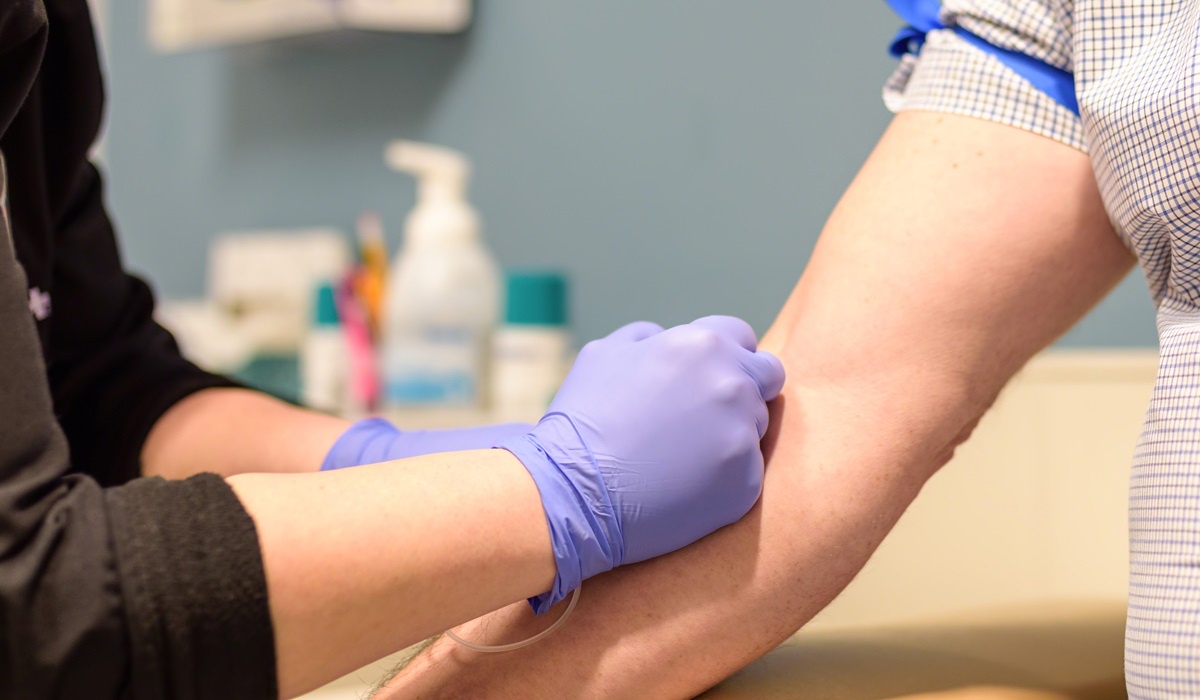HIV testing determines whether a person is HIV-positive. The virus that causes acquired immunodeficiency syndrome is the human immunodeficiency virus (HIV) (AIDS). The most advanced stage of HIV infection is AIDS.
As part of normal health care, the Centers for Disease Control and Prevention (CDC) recommends that everyone 13 to 64 years old be tested for HIV at least once and that those at higher risk for HIV be tested more frequently. Your healthcare practitioner may prescribe HIV testing if you are over 64 years old and at risk for HIV.
Having vaginal or anal sex with someone who is HIV-positive or whose HIV status is unknown, having sex with several partners, and injecting drugs and exchanging needles, syringes, or other drug equipments with others are all risk factors for HIV.
The Centers for Disease Control and Prevention (CDC) recommends that all pregnant women be tested for HIV so they can begin taking HIV medications if they are HIV-positive.
HIV testing can detect HIV infection, but it cannot determine how long an individual has had HIV or whether they have AIDS
Why is HIV testing so essential?
Understanding your HIV status can protect you and others.
If you do not have HIV:
A negative HIV test result indicates the absence of the virus. Continue taking precautions to avoid contracting HIV, such as using condoms during sexual activity and, if you are at high risk of contracting HIV, using HIV prevention medications (called pre-exposure prophylaxis or PrEP). Read the information on the HIVinfo fact sheet titled The Basics of HIV Prevention.
If you are HIV positive:
A positive HIV test indicates HIV infection, but you can still protect your health. Start by speaking with your doctor about antiretroviral therapy (ART). ART patients take a mix of HIV medications daily to treat HIV infection. ART is recommended for all HIV-positive individuals and should be initiated as soon as possible. HIV cannot be cured by ART, although HIV medications help patients live longer, healthier lives.
The primary objective of ART is to lower viral load to undetectable levels. An undetectable viral load indicates that the concentration of HIV in the blood is too low to be identified by a viral load test. People with HIV who maintain an undetectable viral load pose no danger of sexually transmitting HIV to their HIV-negative partner.
- HIV Testing Types
- Tests for antibody screening
These tests look for proteins produced by the body two to eight weeks after an HIV infection and also known as immunoassay or ELISA testing. They are often quite precise.
Rapid versions of these blood and oral fluid tests can provide findings in 30 minutes or less, although they may be negative even if the patient is infected. It is known as negative.
Combined antibody/antigen testing
The Centers for Disease Control and Prevention (CDC) recommends these blood tests. They can detect the virus sooner than antibody screenings. They test for HIV antigen, a virus-produced protein called p24 that appears 2 to 4 weeks after infection. Additionally, they test for HIV antibodies.
A fast antibody/antigen test can yield results in as little as twenty minutes.
Nucleic acid test (NAT)
They are also referred to as an RNA test. It searches for the virus and may detect HIV around ten days after exposure. It is costly. Thus it is typically not the first option. However, if you are at high risk and exhibiting flu-like symptoms, your doctor may prescribe it.
Home testing kits
Blood and oral fluid testing kits are available in the United States. You can purchase them locally or online. Choose one that has FDA approval.
Laboratory tests are slightly more sensitive than home tests. You can visit TIB Pharmacy for Lab Testing.
What to Count On
You may need to contact your doctor to schedule a lab test. Many public health clinics accept walk-in patients.
HIV Test Results
Some exams are anonymous, meaning your name is not associated with the outcome. Others are strictly private: Your information is tied to the result, but privacy regulations safeguard it.
Positive test results
Positive test results indicate the presence of HIV in the body. Obtain a regular lab test to verify the results of a fast test. If you have undergone a laboratory test, additional blood tests can help confirm your diagnosis:
- Western blot assay or indirect immunofluorescence test
- Differentiation between HIV-1 and HIV-2 antibodies
A positive HIV test does not indicate that a person has AIDS, the most severe form of the illness. HIV treatment can prevent the development of AIDS, so consult your doctor immediately about beginning antiretroviral therapy (ART). These medications reduce the amount of the virus in the body, sometimes to an undetectable level. They also defend your immune system, preventing your HIV infection from progressing to AIDS.
Negative test results
If your HIV test is negative, you can take precautions against the virus. They include engaging in safe sexual behavior and taking a medication known as pre-exposure prophylaxis (PrEP).
Your partner may still be infected if you test negative for the virus. Discuss with them the importance of testing.
It could take up to six months before you develop enough antibodies for certain tests to be positive. If it has been less than three months since you may have been infected and your test result is negative, you should obtain a second test at six months to be certain.


No comments yet